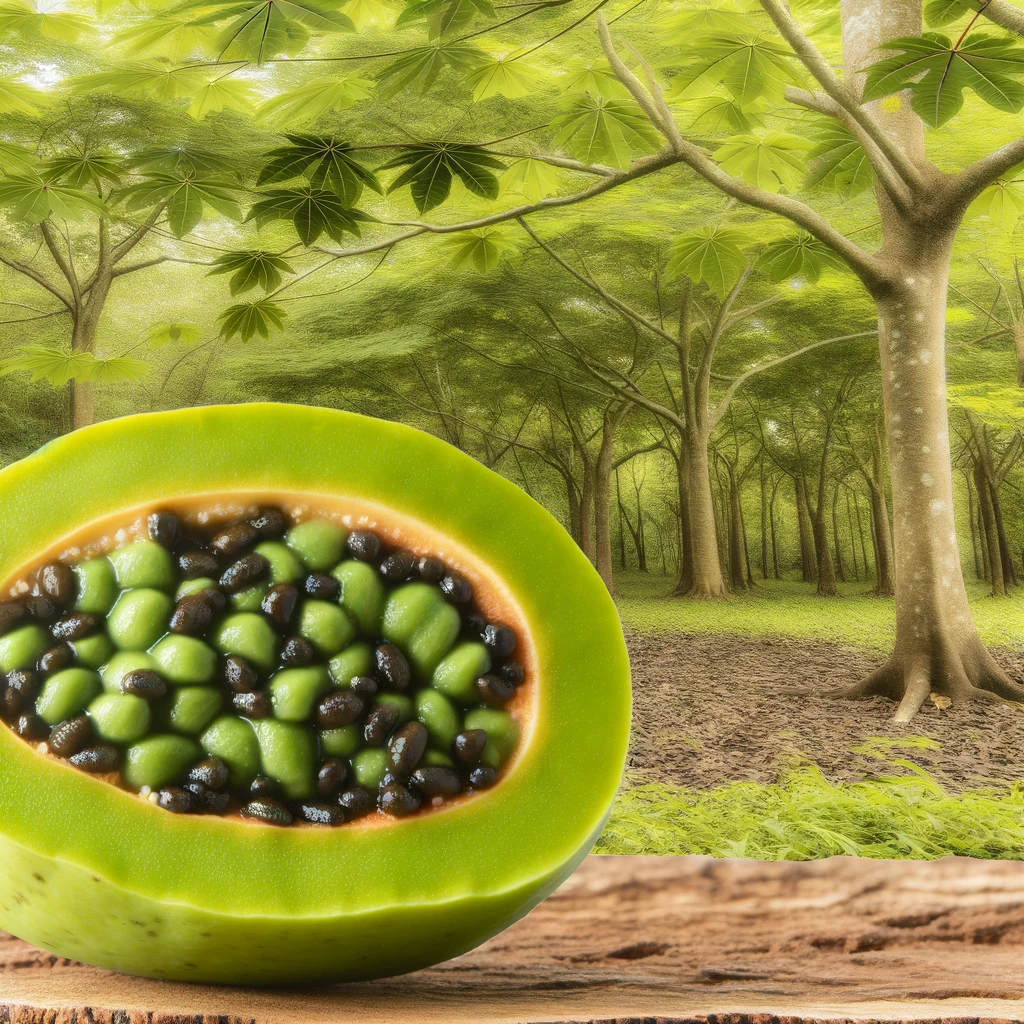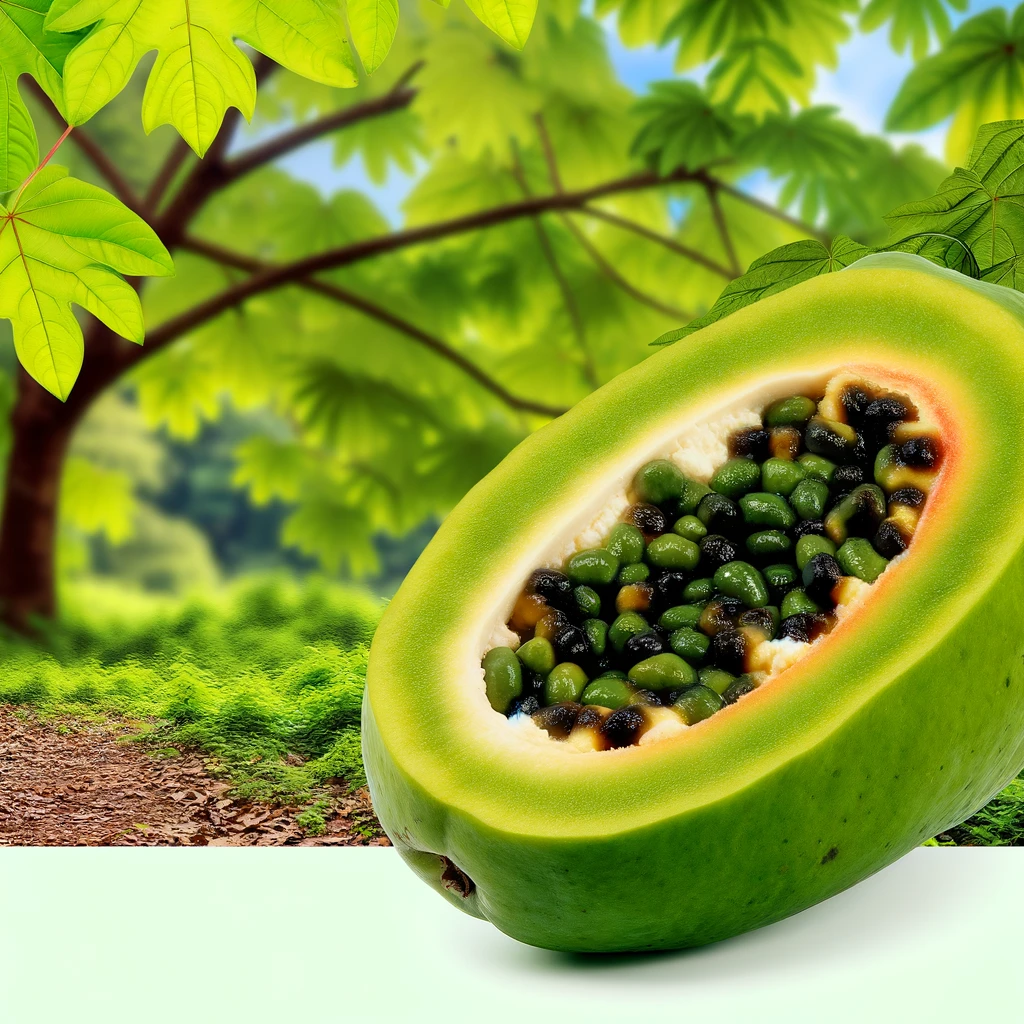

Pawpaw fruit, often mistaken for its tropical cousin papaya, stands out as a unique and nutritious offering from nature’s bounty. This comprehensive guide delves deep into the world of pawpaw fruit, exploring its benefits, taste profile, and commonly asked questions. Whether you’re a health enthusiast, a culinary adventurer, or simply curious, read on to discover everything you need to know about this remarkable fruit.
Introduction to Pawpaw Fruit
The pawpaw fruit, scientifically known as Asimina triloba, is a lesser-known gem native to North America. Thriving in the temperate woodlands of the eastern United States, this fruit is celebrated for its creamy texture and exotic flavor profile that hints at a blend of banana, mango, and melon. Despite its tropical taste, the pawpaw is cold-hardy, making it a fascinating subject for both gardeners and food lovers.
Nutritional Profile of Pawpaw Fruit
Pawpaw fruit is not only delicious but also packed with nutritional benefits. It’s a rich source of vitamins, particularly vitamin C and A, offering antioxidant properties that support immune health. The fruit is also high in minerals such as magnesium, iron, and potassium, which are essential for heart health and blood pressure regulation. Additionally, pawpaw contains significant amounts of dietary fiber, aiding in digestion and promoting a healthy gut.
Health Benefits of Pawpaw Fruit
Boosts Immune System
Pawpaw fruit’s high vitamin C content plays a crucial role in bolstering the immune system, making it more efficient in warding off infections and diseases.
Improves Digestion
The dietary fiber in pawpaw fruit helps to regulate bowel movements, reduce constipation, and prevent digestive disorders.
Supports Heart Health
Rich in potassium and magnesium, pawpaw fruit contributes to maintaining healthy blood pressure levels and supports overall cardiovascular health.
Culinary Uses of Pawpaw Fruit
Pawpaw fruit’s unique flavor and creamy texture make it a versatile ingredient in the kitchen. It can be eaten fresh or incorporated into a variety of dishes, from smoothies and desserts to savory sauces. When ripe, the fruit’s flesh can be scooped out and enjoyed directly or used to add a tropical twist to your recipes.
How to use papaya and pawpaw?
Using papaya and pawpaw in your diet and daily routine can offer a variety of health benefits and culinary delights due to their rich nutritional profiles and unique flavors. Here are some tips and ideas on how to incorporate both fruits into your lifestyle:
Papaya: A Tropical Delight
Culinary Uses:
- Fresh Consumption: Ripe papaya can be eaten fresh. Just cut it in half, scoop out the seeds, and enjoy the flesh with a spoon. You can sprinkle it with a little lime or lemon juice to enhance its flavor.
- Smoothies and Juices: Papaya makes a great addition to smoothies and juices, offering a tropical flavor and creamy texture. Blend it with other fruits, such as pineapple or mango, for a refreshing drink.
- Salads: Add papaya to fruit or green salads for a sweet, tropical twist. It pairs well with avocado, greens, and citrus-based dressings.
- Desserts: Use papaya to make sorbets, ice creams, or fruit tarts. Its natural sweetness adds a lot of flavors without the need for added sugars.
Health and Beauty:
- Digestive Aid: Papaya contains an enzyme called papain, which aids in digestion and can help break down proteins. Eating papaya or drinking its juice can help alleviate digestive issues.
- Skin Care: The enzymes and vitamins in papaya make it beneficial for skin health. Apply mashed papaya as a face mask to help exfoliate and moisturize the skin.
Tips for Enjoying Papaya and Pawpaw:
- Choosing the Fruit: For papaya, look for fruits that are partly or fully yellow and feel slightly soft to the touch. For pawpaw, choose fruits that are soft and have a fragrant smell.
- Storage: Unripe papaya can be left at room temperature to ripen. Once ripe, it can be stored in the refrigerator to extend its life. Pawpaw should be eaten soon after ripening, as it doesn’t store well for long periods.
- Preparation: Always wash the fruits before cutting. Be mindful of removing the seeds, as they are not meant to be eaten.
Experimenting with papaya and pawpaw in your diet can be a delicious way to enjoy their health benefits. Whether you prefer them in smoothies, desserts, or as part of your beauty regimen, these fruits offer versatility and a bounty of nutrients.
FAQs
What is the benefit of pawpaw fruit?
Pawpaw fruit offers numerous health benefits, including boosting the immune system, improving digestion, and supporting heart health due to its rich content of vitamins, minerals, and dietary fiber.
What does pawpaw fruit taste like?
Pawpaw fruit has a unique, tropical flavor that is often described as a cross between banana, mango, and melon, with a creamy texture that resembles custard.
Is pawpaw the same as papaya?
No, pawpaw and papaya are not the same. While they share a similar name and tropical flavor profile, pawpaw (Asimina triloba) is native to North America, whereas papaya (Carica papaya) is native to the tropics of the Americas and widely cultivated in other tropical regions.
Can you eat pawpaw fruit?
Yes, pawpaw fruit is edible and delicious when ripe. Its flesh can be eaten raw or used in cooking and baking to add a tropical flavor to dishes. However, the seeds and skin of the pawpaw should be avoided as they contain harmful substances.
Conclusion
Pawpaw fruit, with its delightful taste and impressive health benefits, is a true natural treasure. Whether you’re looking to enrich your diet with nutritious fruits, explore new flavors in your culinary creations, or simply satisfy your curiosity about this exotic fruit, pawpaw offers something for everyone. Embrace the opportunity to experience the unique charm of pawpaw fruit and discover a new favorite in your fruit repertoire.
